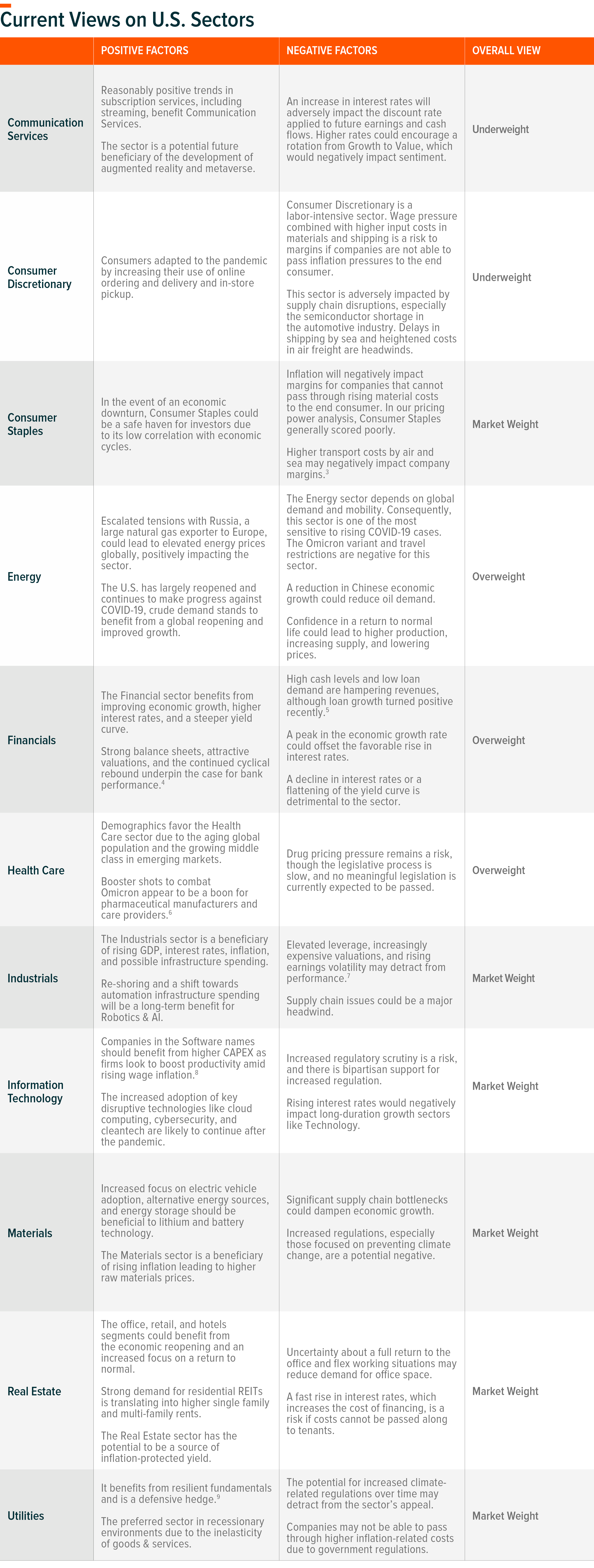Russia’s invasion of Ukraine, the biggest conventional military attack in Europe since World War II, has wide-ranging implications for economies and markets around the world. Notably, the conflict has increased commodity prices, which will likely keep inflation higher for longer. This can lead to broad turmoil mostly in the region but with implications across the entire world.
Russia represents only about 3% of global GDP and comprises just 0.3% of the MSCI ACWI Index. As a result, direct exposure to Russia’s economy and Russian equities is reasonably limited with the S&P 500 Index providing around 0.1% direct sales exposure to Russia. However, Russia produces about 10% of the world’s crude oil supply, making it the third-largest producer of global oil. Also, Russia produces 17% of the world’s natural gas supply. It is the world’s second-largest producer of natural gas and provides Europe with about 40% of their natural gas needs.
Because of Russia’s role in the energy space, oil and natural gas production can’t be replaced easily, which complicates a potential strategy of a full cut-off of Russian fuel. BofA expects Brent crude prices to increase to between $110 and $120 per barrel, barring any potential damage to infrastructure that affects output.1
This conflict also presents risks to metals and food supplies, which will keep up near-term pressure on consumer prices. Russia is a big supplier of palladium and aluminum. Palladium is needed for automobiles, electronic components, jewelry, and dental fillings, among other products. While Ukraine is a big producer of wheat and corn.
As higher energy prices amplify inflationary pressures, they could dampen consumption and real economic growth. Europe is more exposed to these risks than the U.S. Limited income expansion in Europe relative to the U.S. over the past decade, coupled with a weaker Euro, makes higher crude and gas prices more painful for consumers. Currently, the EUR/USD is at $1.125. While U.S. consumers may be hit with higher energy costs, we expect a minimal impact on the supply side because the U.S. is energy independent. Higher for longer energy costs though would push out long-term breakeven inflation. And if it’s pushed out too long, then it could weigh on consumption and GDP.
Market Implications
From a corporate profit perspective, the S&P 500’s direct sales exposure to Russia is about 0.1%. So, the direct impact on American companies’ top and bottom lines is expected to be minimal.
However, the indirect implications are much more pronounced given how connected the U.S. is with Europe. Disruptions from this war and the higher energy prices that result could significantly dampen Europe’s growth outlook while weighing on corporate profits. Lower demand from European consumers could have an adverse impact on American profits, as Europe contributed about 14.5% of S&P 500 revenues in 2021.2 Europe is likely to have sufficient energy in the near term as winter comes to an end, but if restrictions continue into next winter, energy rationing is possible.
Putting it all in perspective, aside from commodities, Russia doesn’t play much of a role in the global economy. The U.S. doesn’t rely on Russia for components in the supply chain like it does with China. Using history as a guide, U.S. markets typically recover earlier from geopolitical events due to their safe haven status.
For positioning, investors should be ready for volatility as events unfold and focus on more defensive sectors of the economy. The Energy sector could see more upside, but exceptionally high prices are likely unsustainable. Please see below for our current sector views.

 Michelle Cluver
Michelle Cluver David Beniaminov
David Beniaminov